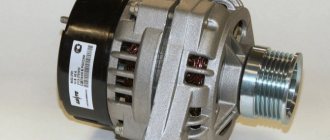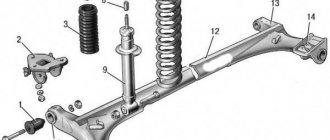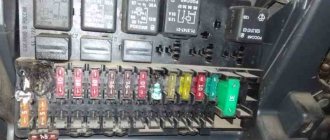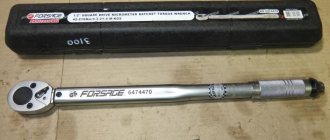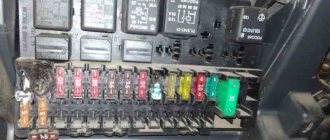It is very important that the engine operates correctly in any mode, including idling. However, many car owners are faced with a problem: when they release the gas, the engine speed does not drop. As soon as such a defect is discovered, it is necessary to immediately find out the cause and eliminate the malfunction for the smooth operation of the car. Also, the engine may slow down for a long time, which also does not contribute to proper operation.
Typically, upon reaching operating temperature, the speed should drop to its normal level. The manufacturer indicates the indicators for each specific vehicle model in the operating manual. They may vary slightly depending on the mileage and general condition of the car, but usually stay within the range of 650-1000 rpm.
In some cases, the speed drops very slowly or even stays at the same level of 1500-2000 revolutions. In this mode, not only does fuel consumption increase, which affects the driver’s finances, but it also contributes to engine wear.
The cause of the idle failure must be diagnosed by qualified technicians. However, you can also understand on your own why the engine speed does not drop.
Problems with the carburetor system
When releasing gas, the drop in speed can be bad for both injectors and carburetor systems.
If the car has a carburetor, then there may be several defects.
Most often, the speed does not drop due to a faulty throttle valve. When the engine warms up, it is in the open position to allow more air into the system. Then it closes and the speed should drop.
If the throttle valve is not closed completely, the mixture will still be over-rich when the operating temperature is reached, and the speed will remain at the same level. If this part is heavily soiled or deformed, it cannot close completely.
You can clean the damper using a special product, which can be purchased at an automotive supply store. Deformation may require replacing the carburetor completely. The damper may not close tightly if the drive cable is severely worn. Replacing it may improve the situation.
Another common reason why the engine speed does not drop when idling is the gasket between the carburetor and the cylinder head, which has become unusable, or a damaged intake manifold.
After replacing the carburetor or cleaning the power system, you can often notice that the engine speed is slowly dropping. This occurs due to improper adjustment of the idle system; an over-enriched air-fuel mixture is often supplied. To eliminate the malfunction, it is necessary to adjust the ratio of fuel and air supply to the system.
A high level of fuel in the carburetor float chamber can also cause a malfunction. The needle valve is responsible for it. Checking this detail may correct the situation.
Replacing the brake light, tail light, turn signal lamp on a Priora
To remove one of the lamps, you need to grab its “socket” with your hand and turn it slightly counterclockwise. After which the lamp is removed from the base of the lantern.
Now, in the same way, we take the lamp itself, and turning it counterclockwise relative to the socket, we remove it.
Replacing the lamp is carried out in the reverse order. It is worth keeping in mind that when installing new bulbs in the Priora's taillight, you must adhere to the same rules as with the front headlights. That is, you should not touch the glass of the lamp with bare or dirty hands, otherwise this will lead to a decrease in its service life.
After all the necessary work has been completed, you can begin installing the flashlight in its place by tightening all the retaining screws and closing the special technological pocket with Velcro. The price of each such lamp is no more than 50 rubles, and if you replace the lamp, you will have to fork out for it, since you can buy it no cheaper than 1400 rubles for a standard factory-made DAAZ.
Injector system
If your car has an injection system, there may be many more reasons for high idle speeds. Here, both mechanical elements and electronic devices responsible for adjusting the idle speed can fail.
The main injector malfunctions include:
- Incorrect operation of the temperature sensor installed in the cooling system. Incorrectly received data from this device causes the electronics to recognize the engine as cold and work to warm it up, thereby maintaining high speeds necessary to reach operating temperature. Overheating can often occur, which leads to more serious damage, including major engine repairs. The same effect is possible if the idle speed control is not operating correctly.
- The throttle control cable may become stuck. The higher the mileage of the car, the higher the risk of encountering a similar problem.
- The electronic XX operation sensor often malfunctions, then the speed will either increase or disappear altogether.
- The spring that brings the throttle valve to its original closed position is not functioning properly, is jumping off, or is being stretched too far.
- Too much air enters the fuel combustion chamber due to poor quality or leaky gaskets. It is necessary to carefully check the seals of the manifold and injectors.
- And the simplest reason is usually the incorrect placement of the mat after a visit to a car wash or dry cleaning of the interior. It is often inaccurately placed under the accelerator pedal, which leads to the appearance of improper engine operation.
Installing LED tail lights on Priora
As for LED tail lights for Lada Priora cars, their prices are of course a little higher. Namely, a set of such lighting equipment can be purchased for around 3,200 rubles. As for installing a flashlight instead of a standard one, there is absolutely nothing unusual here.
It is necessary to disconnect the power connector for the flashlight, which is standard for all types of Priora, and then, after removing the old flashlight, install a new one with LED lights in its place. There is no need to perform any additional actions or manipulations. And the result of the work done can be seen in the photo below:
The Priora has three brake lights: two in the rear lights and an additional one installed in the spoiler. Their purpose is to warn drivers of cars moving behind about braking. Operating a vehicle with non-functioning brake lights is prohibited. If the lights on the Priora do not light up, you need to contact an auto electrician or fix the problem yourself. In the latter case, the driver needs to have a minimum set of tools to find and eliminate the causes of the malfunction.
Floating speed
In addition to slowly falling revs, car enthusiasts may encounter a phenomenon called floating revs, when they drop and then rise sharply. The reason is excessive air supply into the system, which causes the engine to spin up to 2 thousand revolutions at idle.
This often happens in cars that have a fuel injection sensor. It calculates how much air the mixture needs. When its operation is disrupted, different amounts of oxygen are supplied at different times, as a result, speed jumps are observed approximately every 3 seconds.
Faced with a similar phenomenon, the same computer diagnostics will be a prerequisite. It is very important that this and all subsequent work is carried out by experienced, qualified specialists. By contacting a service that does not specialize in breakdowns of this kind, you may be faced with the need to carry out an expensive overhaul of the engine ahead of time.
For normal engine operation and acceptable fuel consumption, it is necessary that all power unit systems operate properly. In this case, the engine should operate normally both under load and in idle mode.
In this article we will talk about why engine speed does not drop, and also consider the main reasons why such problems arise on carburetor and injection cars.
Read in this article
How to change the brake light bulb on a Priora
1200 rub. for the photo report
We pay for photo reports on car repairs. Earnings from 10,000 rubles/month.
Write:
The light bulbs for the dimensions, brake light, reverse and turn signals in the Priora's taillight essentially change in the same way as on the Kalina, that is, to replace the bulbs you will first need to remove the taillight. To unscrew the headlights, you will need to partially bend the carpet (trunk lining) in order to get to the fastening bolts. It is not necessary to disconnect the light bulb connector because the length of the wires will be enough to set the flashlight a little to the side and unscrew the socket of the required light bulb. All bulbs in the taillight are replaced in the same way. To illustrate the process of removing the rear light of a Lada Priora hatchback and changing the brake, parking, reverse or turn signal lamps, watch the video.
Part 1. Approach
I have repeatedly seen the experience of people moving light bulbs/plafonds/PTF to the lower section of the rear light, and the brake light, accordingly, moved to the top. To be honest, I didn’t want to do this due to some internal principles, probably... There was a feeling that this was something not entirely worthwhile, not right - in general, akin to one of the meanings of the word “collective farm”. It didn’t really attract me in the photo... Well, yes, it’s cute, but nothing more.
First
I really liked this solution when I saw it live on the machine Ivan172794.
By the way, his car overall looked pretty good. Secondly
, the other day I saw a completely stock, except for the tinting, Priora in my city and something seemed strange and at the same time attractive to me... Anyone who has read it may remember a phrase from the text of the very first entry of our BZ:
“ Have you ever caught yourself thinking that it seems like an ordinary production car, but you look at it, realizing that there is something different in it, some kind of feature?
Something that makes it special without being conspicuous.” — so the highlight of that Priora was precisely the rearrangement of the elements of the rear lights.
Well, thirdly
, on the Ford Focus II in the sedan body, the lights initially come with the layout that the Priora gets after intervention in the rear.
Part 2: Change
The last straw was the burnt-out one of the indicator light bulbs on the Ford - the Internet showed that both it and the Priora had the same marking, that is, P21/4W... Everything would be fine, but only P21/5W could be found
Arriving at the garage
and, having changed into proper clothes, began. First of all, I opened, so to speak, the hatches in the upholstery for access to the flashlight mounts.
The design and arrangement of the rear lights on a Lada Priora car are such that if it is necessary to replace one of the failed bulbs, you have to remove the light completely. It is logical to first consider the procedure for removing the rear light using the example of a Priora in a hatchback or sedan.
Floating speed: reasons
Note that in some cases the revolutions do not just slowly fall or remain at the same level, but “float”. In this case, the engine may become unstable. Floating speeds first fall, then increase sharply and everything repeats. A common cause of this phenomenon is the supply of excess air, which leads to “jumps” in speed at idle.
If malfunctions occur, the control unit cannot prepare the “correct” mixture for the idle mode, which causes speed jumps after releasing the gas pedal or when the engine is idling.
Why do the brake lights on the Priora not light up?
There are several options for the malfunction:
- three brake lights do not light;
- one or two stops do not work;
- brake lights flash.
One brake light usually won't light because the bulb is burned out. In other cases, the problem lies in the wiring, fuses or in the limit switch that is responsible for turning on the brake lights when braking. A faulty switch can also cause another type of malfunction, when the brake lights do not go out and are constantly on.
A faulty switch, such as a lamp or fuse, is not repairable and must be replaced. Also, if the brake lights on a Priora do not light up, the reason may lie in oxidized contacts of the rear lights.
To solve the problem yourself, you need to have the minimum tools necessary to find a solution to the problem:
Let's sum it up
As you can see, in order to accurately determine why the engine speed is not reset, in many cases in-depth diagnostics may be necessary. For carburetor engines, cleaning and adjustment of the carburetor itself is often necessary, while the injector will require computer diagnostics.
If the problem is not on the surface (the throttle cable has become sour, after washing or dry cleaning, the carpet in the cabin is not installed correctly, which presses the gas pedal, etc.), then it is better to take the car to a service center.
The most complex situation is when the design of the power system involves the presence of a large number of sensors and actuators. In this case, even the use of diagnostic equipment does not always allow you to quickly and accurately determine the problem.
Additional relay and fuse block for Lada Priora
Additional relays are mounted on a bar and located under the dashboard, near the front passenger's feet. To get to them, you need to remove the right tunnel lining. Next to the additional relays is the electronic engine control unit (ECU).
If its connector interferes with access to the relay, disconnect it by first removing the negative terminal from the battery.
Additional fuses block
F1 (15 A) – main relay circuit, starter blocking.
F2 (7.5 A) – power circuit of the electronic control unit (ECU).
F3 (15 A) – electric fuel pump.
If the fuel pump has stopped pumping (this can be determined by the absence of a sound when the ignition is turned on), check together with relay K2. There may also be problems with the immobilizer, it blocks the pump, see information about F20.
If the wiring, this fuse and the relay are good, most likely the fuel pump itself has failed. To remove it, you need to disconnect the battery, remove the rear seat cushion, unscrew the cover, ring and fuel hoses, then carefully remove the entire fuel pump.
Additional relay block
K1 – main relay.
K2 – electric fuel pump relay. See above about F3.
How to turn on headlights without MUS
You can turn on the headlights when the light control module has failed by dismantling and removing the chip from it. On the chip you need to find contacts numbered 10 and 12 and insert a copper wire jumper between them. After installing the jumper, the headlights turn on when you turn the ignition key.
Contacts between which you need to insert a jumper (marked with a red circle)
This method will help you get to the nearest service station in the evening. It is not recommended to use the jumper for an extended period of time as it does not provide proper contact and can cause heat to build up, putting you and your vehicle at risk.
Popular options for organizing daylighting in a car
After reading all of the above, some motorists may be upset. But in vain - there is a way out of this situation, because it is not necessary to use branded LED headlights. Light sources that you can install yourself, taking into account the technical tolerances of a certain car design, are quite suitable. There are many electrical circuits with which the system will be activated, including connection from a generator - everyone chooses their own option.
For example, you can make DRLs into standard headlights with your own hands from fog lights or at the place where their installation is planned. You don’t need permission to do this, all you have to do is connect the system as follows:
- When you turn the ignition key, the running lights turn on automatically.
- When the headlights are turned on, the running lights turn on, except in cases where the headlights are turned on briefly.
Budget ways to implement daylight lights
- LED running lights Eagle Eye HD-202b are mounted in standard PTF plugs.
- A flexible strip of LEDs secured around the fog lamp using double-sided tape.
- Installation of round lensed lamps in the places of standard PTF mounting.
- The use of an electronic relay to control the power of standard lamps, which allows them to be used as running lights.
The last option is quite simple to implement, so it is worth considering it in more detail.
Route map for eliminating unstable XX on a VAZ 2170
Unstable idle is caused by the fact that the computer incorrectly perceives or does not know at all the amount of air sucked into the intake manifold. A typical treatment recipe looks like this:
- Check the sensors (IAC, DFID, TPS) and replace the faulty ones.
- Make sure that the adsorber valve is in good condition.
- If, after cleaning the throttle valve on the VAZ 21126 engine, the speed fluctuates, you need to make sure that there is no air leakage through the connections to the pipes.
- Check whether the diaphragm in the vacuum brake booster is intact.
When the speed started to fluctuate, I changed the spark plugs and the idle speed sensor, but it didn’t help.


